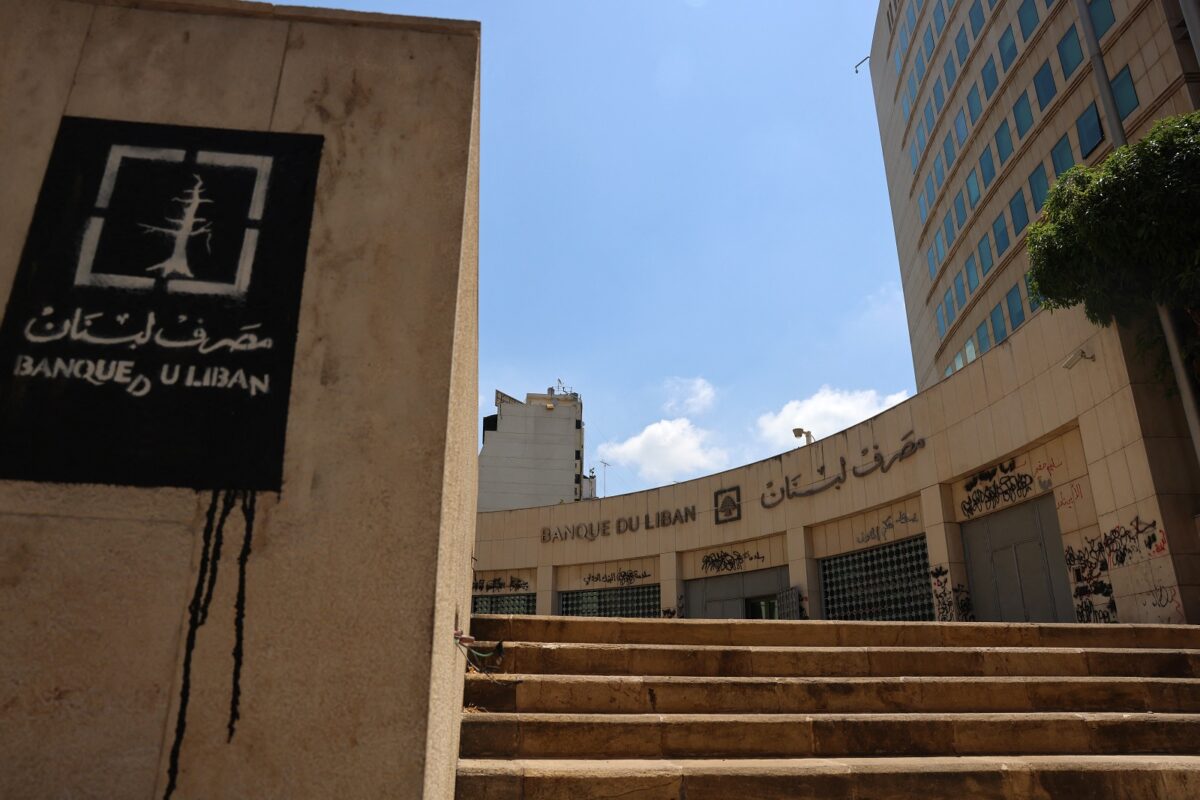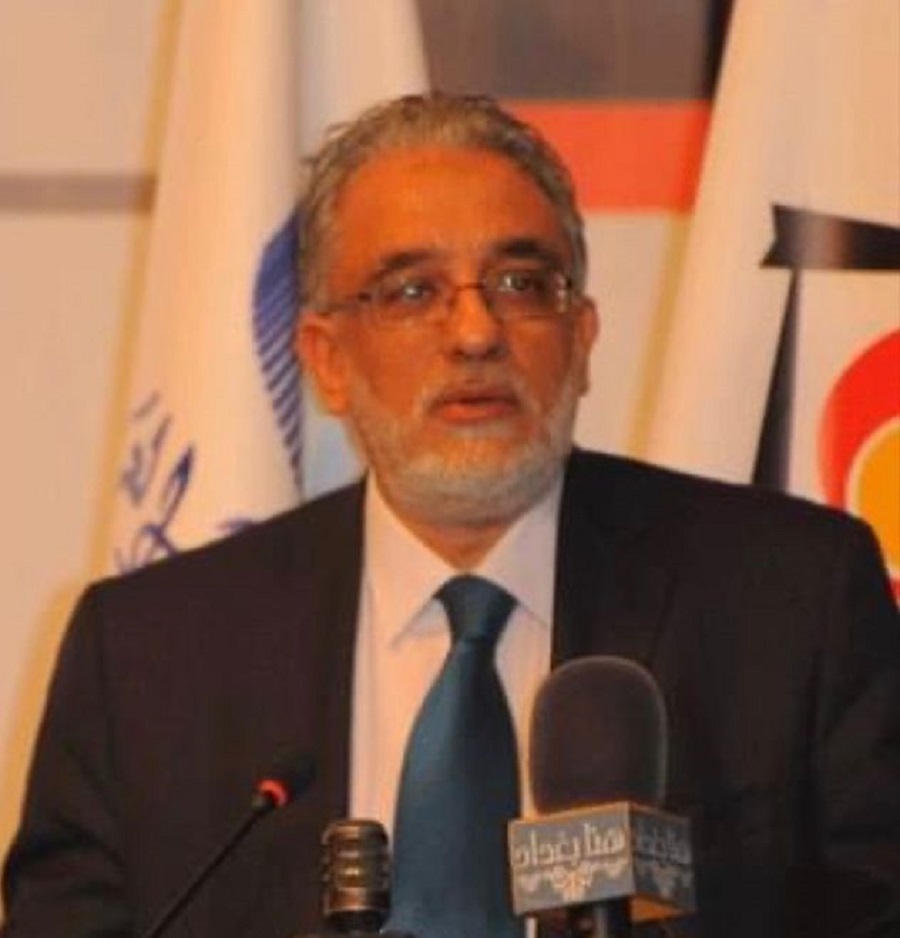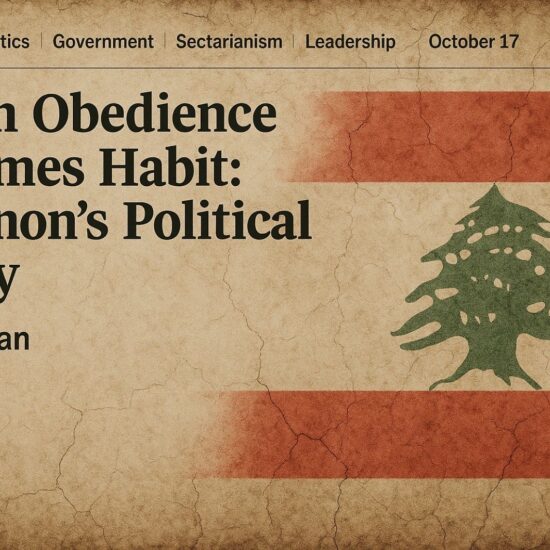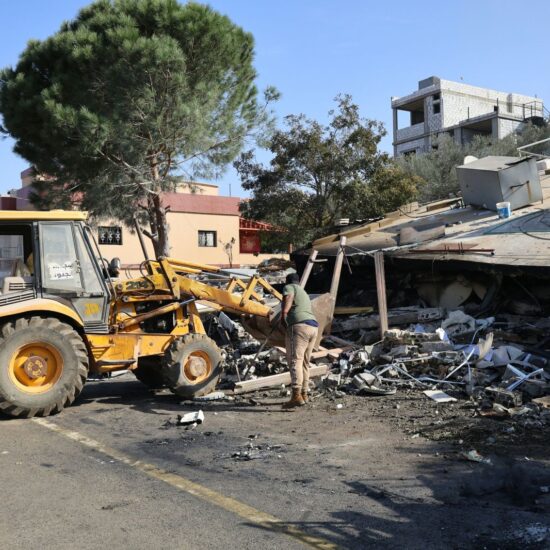
Depositors' harsh reality suggests a partial repayment scheme of savings. Government restructuring plan disclose long phased recovery scenario, raising questions about the melting of 30 billion dollars of deposits and bank capital
In a move aimed at gaining a clearer understanding of Lebanon’s financial landscape, the Banque du Liban (BDL) has requested detailed information about bank deposits from financial institutions. This data will be used to inform the development of a restructuring plan, separate from the one being formulated by the government team led by Prime Minister’s advisor, Nicolas Nahas.
While reliable statistics on the origins of the deposit base are not available, anecdotal evidence points to the importance of Lebanon’s large diaspora, which deposits part of their wealth in the Lebanese banking system and supports relatives in Lebanon through remittances, part of which are saved in bank deposits. In fact, receipts of remittances as percent of GDP in Lebanon are among the highest in the world (21 percent of GDP in 2007), with the largest flows originating from the GCC (54 percent), Australia, (7 percent), the United States (6 percent), and Canada (3 percent). A plot of deposit growth and real GDP growth in the GCC shows some correlation since the early 2000s, when the GCC became an increasingly popular destination for Lebanese expatriates, and when oil prices rose and increased the wealth of Arab investors. Moreover, global liquidity conditions could affect deposits in Lebanon, as foreign investors might be more inclined to deposit in Lebanese banks in times of abundant liquidity.
New taxes on loans repayments
In a related move the interim government submitted a draft law to the Parliament, aiming to allocate certain tax revenues to finance a proposed deposit recovery fund. According to the draft, the tax administration is required to audit the tax clearances of borrowers who repaid their loans at an exchange rate and value different from the actual value of their debt, thereby making profits from exchange rate differences and settlements. The circular said that if the administration finds any reason to adjust the clearance or impose additional taxes, it will issue the necessary costs and notify the taxpayer. The draft excludes from retroactive taxation housing loans, individual consumer loans, and personal instalment loans that do not exceed 100,000 dollars in value at the time of issuance. These revenues collected by the state will be allocated to finance the proposed deposit recovery fund, as part of a financial rebalancing law or any other fund dedicated to the same purpose.
The government, in the explanatory memorandum of the draft law, pointed to two categories of borrowers who made profits by repaying their loans during the financial crisis. The first category consists of borrowers who repaid their debts “covered by the regulatory authority (i.e., the government) at a value much lower than their actual value by buying debts from banks from depositors whose deposits were frozen, thereby making substantial profits at the expense of these depositors and others.” This resulted in the “melting” of approximately 30 billion dollars of people’s deposits and bank capital. The second category consists of borrowers who repaid their loans in foreign currency, specifically in Lebanese pounds, based on the exchange rate set by the Central Bank of Lebanon (i.e., 1,507 pounds per dollar), despite the exchange rate plummeting to over 100,000 pounds per dollar. Therefore, the proposal concluded that these two categories made significant profits at the expense of depositors and “bank capital,” which violated the constitutional principles of justice and equality.
Furthermore, the explanatory memorandum emphasised that the income tax law established the principle that no income or profit should remain untaxed unless explicitly exempted. From this perspective, the memorandum aimed to avoid previous criticisms regarding the imposition of taxes on banking profits due to the illegality of retroactive taxation, noting that the tax is actually due and that the draft law aims to collect it.
BDL investigates structure of deposits
The BDL’s Directorate of Statistics and Economic Research has asked banks to submit tables categorising deposits by currency (Lebanese pounds and US dollars) and depositor type. Dollar deposits must exclude those made after October 17, 2019, focusing on ‘Lollars’ or older deposits.
Commercial bank deposits are key to ensuring continued government financing in Lebanon. With the high government debt largely held by the domestic commercial banks, their continued funding, mainly from resident and non-resident deposits, is an important gauge to the viability of the Lebanese financing model. However, available statistics do not shed much light on the origins or determinants of deposit demand, since detailed data on the origins of deposits are not available, and existing statistics on the breakdown into resident and non-resident deposits are not reliable. In addition, while there is anecdotal evidence regarding some drivers of deposit growth, particularly during the recent upsurge of deposit inflows, formal research on this important issue has been scant.
Statistics show that resident customers’ deposits represent 66.11% of total liabilities; they dropped by 7.83% since June 2023 to reach 68,97 billion dollars by the month of June 2024. In more details, deposits in foreign currencies (being 99.07% of resident customers’ deposits) declined by 3.27% YOY to reach 68,33 billion dollars by June 2024, additionally deposits in LBP (0.93% of resident customers’ deposits) fell by 84.73% YOY to stand at 639 million dollars by June 2024 – especially after applying the new official exchange rate of 89,500. This reveals that Lebanon has become highly dollarized and cash based, as the dollarization ratio for private sector deposits increased from 95.37% in June 2023 to 99.23% in June 2024.
Deposits with the central bank (BDL) represented 99.88% of total reserves, and decreased by 4.2% YOY, to reach 81.66 billion dollars in June 2024. Furthermore, vault cash in the Lebanese pound declined by 90.03% on a yearly basis to stand at 100,71 million dollars by the same period. The drop is attributed to the calculation based on the new official exchange rate of LBP 89,500 per USD.
As for non-resident customers’ deposits, grasping 20.14% of total liabilities, they recorded a drop of 2.23% and stood at 21.01 billion dollars in June 2024. In detail, the deposits in LBP fell by 84.69% to reach 32 million dollars and deposits in foreign currencies declined by 1.42% to reach 20,98 billions over the same period. In addition, non-resident financial sector liabilities held 2.55% of total liabilities and decreased by 19.18% YOY to reach 2,66 billions in June 2024.
Deposits recovery plan
Depositors seeking to recover their full bank deposits may face a harsh reality, as ongoing discussions suggest a partial repayment scheme. The plan, still under discussion, proposes different repayment structures based on when the deposits were made.
Depositors with accounts opened before October 17, 2019, are proposed to receive up to 100,000 dollars, while those with accounts opened after that date might receive up to 36,000. Both amounts would be disbursed over a maximum period of 15 years.
According to the plan seen by NOW Lebanon, the total estimated amount needed for these repayments ranges from 15 billion to 22 billion dollars.
- Only 12 billion is guaranteed up to 100,000 per depositor
- 7 billion is unqualified, to be recovered at only 36 cents per dollar
- Write-off of 9.2 billion in interest
- 9.3 billion in deposits converted to bank equity shares
- 11.9 billion in “zero coupon bonds” for 20 and 30 years
- 11.9 billion to the deposit recovery fund based on a promise from state asset revenues
- 4 billion in deposits subject to write-off if their source is not clarified
- 21 billion unqualified to be paid in lira between 30 and 45% of its value only
This proposal seems to place a heavy burden on depositors by significantly reducing the value of their deposits. It will be necessary to carefully discuss these details with the stakeholders to ensure that the problem is addressed in a fair and effective manner.
However, banking sources reveal that Lebanese banks are reportedly unable to fully fund this amount. Consequently, it is suggested that the repayment be shared equally between the banks and Banque du Liban (BDL), where a significant portion of the deposits was originally placed by the banks.
To alleviate the financial strain on both BDL and banks, the following measures have been proposed:
- Verification of deposit sources: Only deposits with proven clean sources of funds will be eligible for repayment.
- Exclusion of certain borrowers: Those who have benefited from loan repayments at the exchange rate of LBP 1,500 per dollar, where the total loan value at the onset of the crisis was 38 billion dollars, may be excluded.
- Exclusion of large depositors: Large depositors, who can be classified as investors rather than typical depositors due to the size of their deposits, may also be excluded.
- Exclusion of profiteers: Individuals who benefited significantly from the Sayrafa platform and those who engaged heavily in selling checks are likely to be excluded.
- Exclusion based on subsidy benefits: Those who benefited from subsidies on fuel and other commodities may not be eligible.
- Alternative benefit mechanisms: Proposals include monthly dollar payments for retired depositors along with healthcare provisions.
The required statistics will be divided into 25 deposit categories based on size and 15 categories based on depositor type, including individuals, expatriates, public and private sector employees, and various institutions. For each category, banks will need to provide information on the number of customers, their residency status, and four key data points.
Deposits breakdown
In 2019, the total number of accounts reached 2,813,243 accounts amounting to 154.66 billion dollars, of which 116.87 billion in USD and 37.78 billion in LBP. The dollarization ratio reached 75.57%. The lower bracket represented 99.20% of the total number of accounts reaching 2,790,737 accounts with a total amount of 81.68 billion dollars (52.81% of the total). Meanwhile, the higher bracket, representing 0.80% of the total accounts number, amounted to 72.95 billions, which means that 22,506 accounts only have 72.92 billion or 47.19% of total deposits.
In the lower bracket, 1.725 million accounts (61.81%) were less than 5 million LBP (3,300 USD) with a total of 956 million. In addition, 112,174 accounts were between 300 million LBP (200,000 USD) and 1,500 million LBP (1 million USD) and held 44.67 billion dollars or 54.69% of the total.
In the higher bracket, 17,200 accounts (76.42% of 22,506) held between 1,500 LBP (1 million USD) and 4,500 million LBP (3 million USD) with a total of 26.58 billion dollars. The top brackets of 75,000 million LBP (50 million USD) to more than 150,000 million LBP (100 million USD) constituted 68 accounts only (0.3% of 22,506), holding a total of 8.64 billion dollars.
In terms of number of accounts, most of the accounts clustered at the bottom for both the lower and higher brackets, 62% and 59% respectively; but in terms of value, most of the deposits clustered at the top two brackets for the lower brackets reaching 55%, whereas most of the deposits clustered in the lower to middle three brackets for the higher brackets reaching 58%. This shows that the lower brackets exhibited skewness to the right in its distribution, whereas the higher brackets exhibited skewness to the left in its distribution, thus implying that each distribution was far from normal.
The dollarization ratio increased through the different categories starting with 36.61% for accounts less than 5 million LBP (3,300 USD) to 95.64% for accounts more than 150,000 million LBP (100 million USD). Interesting to note that changes prior to the 2019 crisis were important to sum up just a few changes.
Between 2018 and 2019, the total number of accounts decreased yearly by 2.08% (59,665 accounts) from 2,872,908 accounts to 2,813,243 accounts. However, the absolute change in number of accounts was most pronounced in the lower bracket, falling by 57,034 accounts (2%) while accounts of higher accounts declined by 2,631K accounts (10.47%). Total deposits dropped yearly by 9.19% (15.65 billion USD) from 170.31 billions in 2018 to 154.66 billions in 2019.
In detail, accounts in LBP and USD retreated by 12.57 billion dollars and 3 billion, to reach 37.78 and 116.87 billions, respectively. In fact, part of the LBP deposits was converted to USD, which explains the 5.14% uptick in dollarization ratio to 75.6%. Meanwhile, the remaining LBP deposits were withdrawn out of the banking system. In detail, the dollarization of the lower and higher brackets increased by 8.63% and 3.39% to reach 67.66% and 84.42% ,respectively.
Between 2018 and 2019, the lower bracket deposits stayed almost the same, falling from 82 billion to 81.7 billion dollars only. However, this bracket witnessed a shift to USD deposits with LBP deposits falling from 33.6 to 26.41 billions while the USD deposits increased from 48.4 to 55.3 billions.
As for the higher bracket, the deposits shrank yearly from 88.28 billion to 72.98. In detail, both deposits in LBP and USD dropped from 16.75 and 71.53 to 11.37 and 61.61 billion dollars.
The Lebanese economy and financial system are characterized by a unique nexus between government debt and the banking system. The ratio of government debt to GDP, at 160 percent, is among the highest in the world and substantially above conventional debt sustainability thresholds. Debt is largely held by domestic commercial banks, which are funded mainly from deposits, including to a significant extent non-resident deposits. As a result, the banking system has grown very large: the ratio of total commercial bank assets to GDP, at 324 percent, is among the highest in emerging markets.
The close interrelation between government debt and commercial banks has its roots in the post-civil-war period of the 1990s. High fiscal deficits in view of the post-war reconstruction coincided with the rebuilding of Lebanon as a regional financial center. As banks quickly reconstituted their deposit base, the government showed continuous demand for bank assets to finance its large fiscal deficits. And conversely, the government’s demand for bank assets enabled banks to continue to expand their deposit base rapidly and profitably.
A bail-out proposal?
This comprehensive data collection will enable the BDL to gain a more accurate picture of the distribution of deposits in Lebanon and inform its decision-making regarding the restructuring plan.
Technically the BDL wanted to see the Interest on deposits recorded starting from July 2015 as well as the amount of money transferred from Lebanese currency to foreign currency starting from October 31, 2019. Top on their priorities also is the amount of money held and due to be paid under Circulars 158 and 166.
It is assumed that this data, which the Banque du Liban has been collecting for about two and a half months, will contribute to providing a comprehensive picture of the deposits with a significant part of their social and economic components. Therefore, sources at the Banque du Liban say that “setting priorities and defining them requires such data to facilitate decision-making and directing it regarding any plan for restructuring the financial sector.”
Estimates about this plan cannot be based on inaccurate numbers and data, and it should not be based on preconceived ideas like those being proposed.
The source asked about the rationale to classify deposits as eligible and non-eligible, with the first receiving a guarantee of 100,000 dollars per deposit, while the second receives 36,000 per deposit? Who decided to take this decision and on what basis, they asked? In reality, there are no clear answers from officials, except that the sector cannot bear a guarantee of more than this amount, even though this amount is very large and may exceed the sector’s capacity. However, setting priorities based solely on financial criteria is not only a limited view but also a flawed one that treats society and the economy as mere numbers without life, as if they were not interconnected.
For example, guaranteed deposits are not just numbers; they are a collection of end-of-service compensations for more than 500,000 families, in addition to funds that the Social Security Fund used to finance medical care in hospitals and private clinics, purchase medications, and conduct laboratory tests, among other medical activities. Similarly, deposits of public sector employees should be treated differently from those of private sector employees, especially when comparing segments. The upper segments may not be justified as end-of-service compensations or savings, while the lower segments may be all that this employee or retiree owned.
Where do we go from here
Any Plan that involves allocating state assets to repay local dollar depositors has the risk of triggering the seniority of Eurobond holders over depositors on claims against the State; and/or making the holders pari-passu with depositors on BDL assets including gold.
The size of the balance sheet and associated losses make Lebanon’s financial sector too big to bail. Financial losses exceed 72 billion dollars, equivalent to more than three times of GDP in 2021.
Combined losses stem from a public sector in default, a central bank holding the largest negative reserves position in the world, and an oversized and insolvent banking system. Therefore, the magnitude of the holes in the intertwined balance sheets of the Central Bank, the banking sector and the Sovereign, dwarfs the current and future assets that the sovereign could realistically mobilize for a bail-out. State-owned assets and public real estate are worth only a fraction of the estimated financial losses, as are any potential revenues from oil and gas, which are still indeterminate and in any case years away.
Given the uncertain valuation of both assets, any crisis resolution plan that relies on these would lack credibility and fail.
A bail-out of the financial sector by taxpayers would redistribute wealth from poorer to richer households, as the public would be asked to compensate bank equity holders and wealthy depositors. Pre-crisis, 50 percent of deposits in Lebanon’s banking system were owned by 1 percent of depositors; with 20 percent of deposits held among 0.01 percent of depositors. The heavy concentration of deposits amongst a few high-net-worth individuals, marking one of the most unequal distribution of deposits in history, must serve as a basis for equity and fairness considerations.
Is a bail-out possible?
As the World Bank argued in its Spring 2021 Lebanon Economic Monitor issue Lebanon Sinking, not only is a bail-out of the financial sector unviable, but it is also inconsistent with the restructuring principles that protect taxpayers and small depositors and foster equitable burden sharing.
A bail-in solution, based on a creditors’ hierarchy, along with comprehensive reforms is the only realistic option for Lebanon to turn the page on its flawed development model. A bail-in, makes large creditors and shareholders bear the main cost of bank restructuring, by writing down, cancelling and/or converting liabilities into equity; this allows viable banks to regain solvency and ensures the protection of small depositors. Lebanon’s post-civil war development model has been characterized by strong interlinkages between the fiscal-monetary-financial sectors, rendering one overly dependent on the other, and in the end leading to systemic failure. With the sovereign default of March 2020, the erstwhile equilibrium has collapsed.
Lebanon must now move to a new sustainable development model. Delays in the day of reckoning with the magnitude and viable distribution of financial losses will only compound human and social capital losses.
As repeatedly called for, Lebanon needs to urgently adopt a domestic, equitable, and comprehensive solution that is predicated on: (i) addressing upfront the balance sheet impairments, (ii) restoring liquidity, and (iii) adhering to sound global practices of bail-in solutions based on a hierarchy of creditors (starting with banks’ shareholders) that protects small depositors.
In reality, the new plan classification may not be sufficient to fully understand the social and economic structure of the deposits, but they do provide a clear idea about it. However, what has not been explicitly mentioned in these classifications is that the funds without a real owner, or those belonging to depositors of non-Lebanese nationalities who smuggled money into Lebanese banks primarily to benefit from banking secrecy and secondarily to evade tax payments, will be restricted.
These funds benefited from high interest rates in Lebanon banks. It can be said that among the criteria proposed for handling deposits is “proving their source,” which has been the subject of extensive debate. It was considered that this criterion threatens a specific group of Lebanese, but it has become clear that this group will only be required to present invoices or physical proof of their activities without any additional requirements related to the legitimacy of transferring money to Lebanon. This applies to a wide range of Lebanese working in Africa.
However, this criterion may affect many deposits that were smuggled from Iraq, Jordan, Syria, Libya, and other countries, which were deposited into accounts bearing numbers rather than names. Lebanese banks have previously been required to provide these deposits and have requested lengthy proof documents that the claimants could not provide, despite both the bank and the depositor knowing that the ownership of these deposits is legitimate and belongs to those claiming them.
Maan Barazy is an economist and founder and president of the National Council of Entrepreneurship and Innovation. He tweets @maanbarazy.
The views in this story reflect those of the author alone and do not necessarily reflect the beliefs of NOW.








